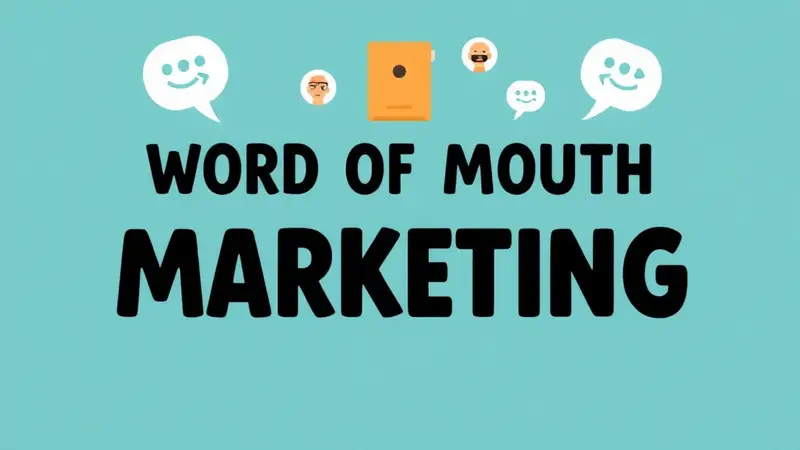Small businesses need to make every marketing dollar count. Crafting compelling ad copy is a vital part of that equation. Whether you’re running ads on Google, Facebook, Instagram, or any other platform, the words you use can make or break your campaigns. For small businesses with limited budgets and resources, learning how to write effective ad copy is an essential skill for attracting potential customers and driving conversions. This post will guide you through the key aspects of compelling ad copy, its importance, and how to refine and optimize it for the best results.
What is Compelling Ad Copy?
Defining Ad Copy
Ad copy refers to the written content in an advertisement. It’s what you see in online ads, social media promotions, or even print ads, and it serves a simple but crucial function: to persuade the reader to take action. This action could be anything from clicking on a link, signing up for a newsletter, purchasing a product, or contacting the business. Ad copy is more than just a string of words—it’s a carefully crafted message designed to resonate with a specific audience, conveying both the offer and the brand’s value in a way that triggers action.
The Significance of Ad Copy in Attracting Clicks and Conversions
Businesses often have only a few seconds to grab someone’s attention. Compelling ad copy grabs that attention and prompts users to engage. A well-crafted ad can mean the difference between a user scrolling past your message or clicking through to learn more.
Here’s why compelling ad copy is essential:
- Captures Attention: With the sheer volume of ads consumers are exposed to daily, your copy needs to stand out immediately.
- Conveys Value: Effective ad copy communicates the benefits of your product or service in a clear and concise manner.
- Creates Urgency: Good copy encourages immediate action, driving more conversions in the short term.
- Builds Trust: Authentic, well-written copy can help foster a sense of trust and credibility with your audience.
Understanding the role of ad copy in your marketing strategy is key to building ads that not only attract clicks but also convert those clicks into meaningful actions.
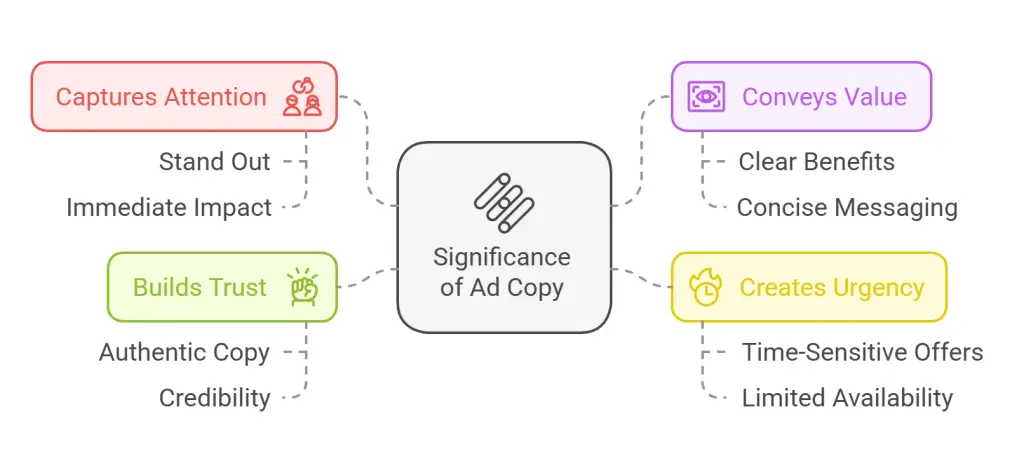
Why is Good Ad Copy Important for Small Businesses?
Differentiating Your Brand
Small businesses often face the challenge of standing out in a crowded marketplace dominated by larger, more established companies. Good ad copy is one of the most effective tools for creating differentiation. Whether it’s through a unique brand voice, showcasing a special offer, or emphasizing a specific value proposition, the right words can make your business memorable to potential customers.
Here’s how strong ad copy can differentiate your brand:
- Unique Selling Proposition (USP): Great ad copy communicates your business’s unique value. Why should people choose you over a competitor? Whether it’s superior customer service, locally sourced products, or an innovative solution, your ad copy should reflect what makes your business special.
- Brand Voice: Compelling ad copy reinforces your brand’s personality. Whether you’re fun and quirky, professional and trustworthy, or innovative and forward-thinking, your tone and word choice help establish your brand identity.
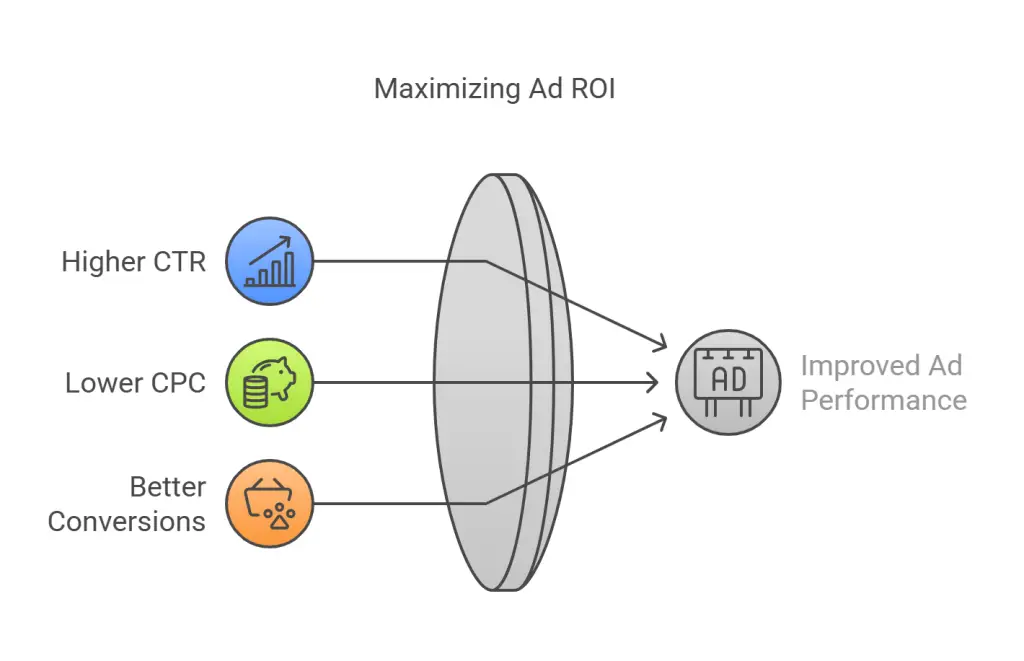
Improving Ad Performance
For small businesses, maximizing return on investment (ROI) is crucial. Every dollar spent on ads should lead to a positive return, and well-crafted ad copy plays a major role in that. Ads with better copy lead to higher click-through rates (CTR), which can lower your cost-per-click (CPC) on platforms like Google Ads and Facebook. Higher-quality ad copy also translates to better ad relevance, leading to improved placement and performance in ad auctions.
Effective ad copy contributes to:
- Higher CTR: Ads that resonate with users and inspire them to click are essential for campaign success.
- Lower CPC: When your ads perform well, platforms like Google reward you with lower costs per click, making your budget go further.
- Better Conversions: At the end of the day, it’s not just about clicks—it’s about conversions. Compelling copy moves users down the funnel, increasing the likelihood of converting.
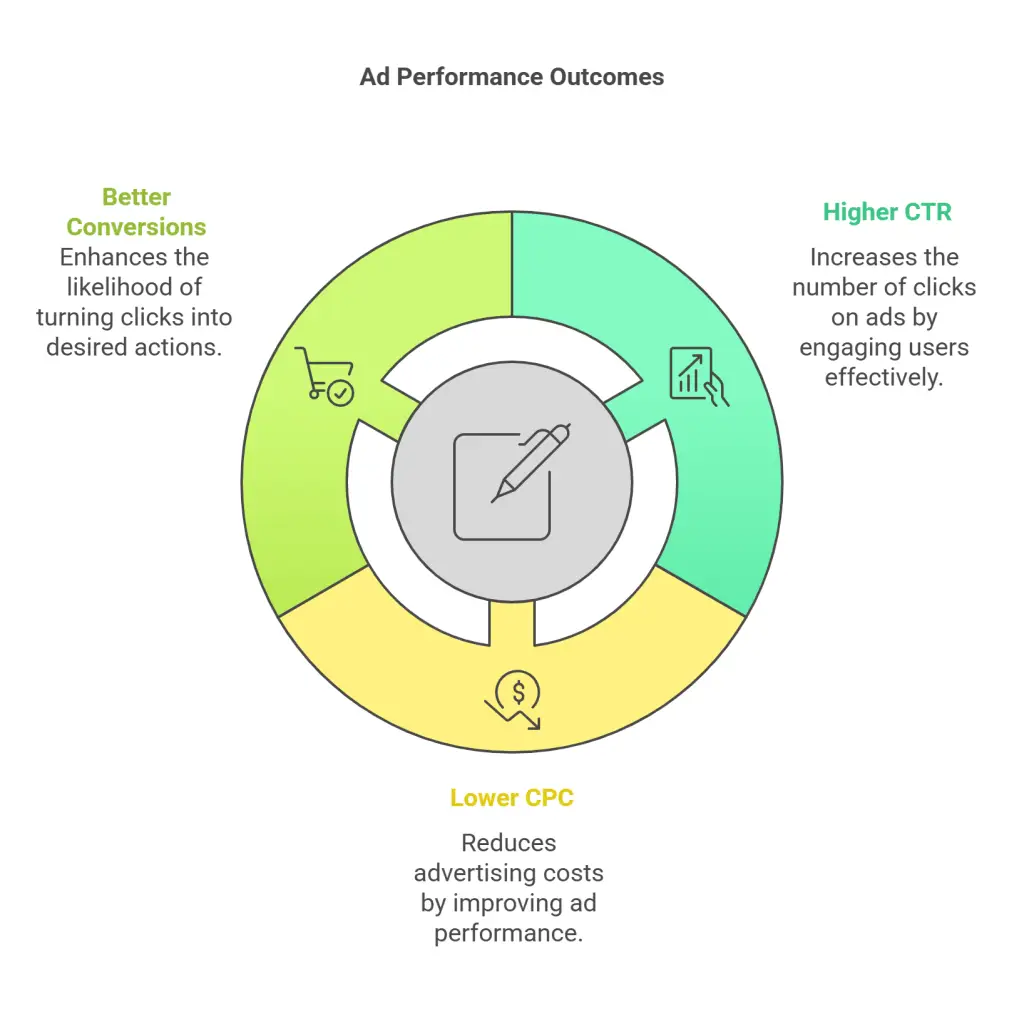
Where to Focus Your Efforts When Writing Ad Copy?
Key Elements of Ad Copy
When crafting ad copy, it’s essential to focus on the key elements that drive engagement and action. While the exact format may vary depending on the platform or ad type (e.g., search ads, display ads, social media ads), there are universal elements you need to prioritize.
1. Headlines
The headline is arguably the most important part of your ad copy. It’s the first thing potential customers see and is crucial for capturing their attention. A strong headline should be:
- Attention-Grabbing: Use strong, action-oriented language to hook your audience.
- Clear and Concise: Keep it short but powerful. A headline should communicate your offer or value proposition in just a few words.
- Relevant: Make sure the headline aligns with your target audience’s needs and interests.
Example: Instead of saying, “Try Our New Product,” consider something more specific like, “Get 50% Off Our New Product Today Only.”
2. Descriptions
The description provides more details about your offer, expanding on the headline’s promise. This is where you can explain why your product or service is the solution to your audience’s problem. Keep your descriptions:
- Benefit-Oriented: Focus on what the customer gains from taking action.
- Easy to Understand: Use simple, straightforward language.
- Compelling: Incorporate emotional or logical appeals to persuade your audience.
Example: “Save time and money with our energy-efficient appliances. Perfect for busy families looking for quality and reliability.”
3. Call-to-Actions (CTAs)
The call-to-action is what drives conversions. It’s the final nudge that tells your audience exactly what to do next. A strong CTA is:
- Direct: Use action verbs like “buy,” “shop,” “discover,” or “learn.”
- Clear: Avoid vague language; be specific about what action you want users to take.
- Urgent: Create a sense of urgency to encourage immediate action.
Example: “Shop Now and Get Free Shipping on Orders Over $50!”
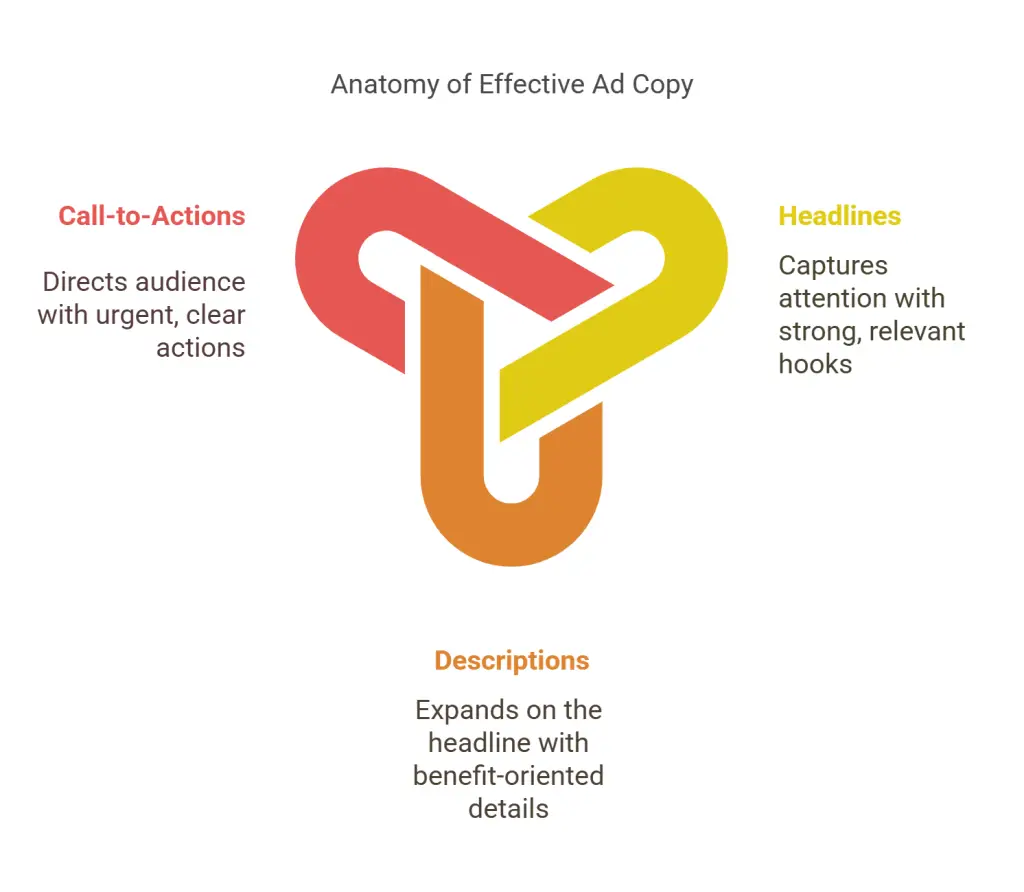
When to Test and Refine Your Ad Copy?
Testing and Optimizing Your Ad Copy
No matter how well-crafted your ad copy is, there’s always room for improvement. That’s where testing and refinement come in. Testing different versions of your ad copy—often called A/B testing or split testing—allows you to experiment with variations and see what resonates best with your audience.
Here are some guidelines on when and how to test your ad copy:
1. Before Launching a Major Campaign
Before investing heavily in a new campaign, run a series of smaller tests with different copy variations. You can test different headlines, descriptions, and CTAs to see which version performs the best. This will allow you to fine-tune your message before committing your full budget.
2. During Campaign Runs
Once a campaign is live, keep an eye on its performance. If certain ads aren’t generating clicks or conversions, it might be time to test alternative copy. Look at the metrics for CTR, conversion rate, and engagement to determine where you can improve.
3. After Campaign Completion
After a campaign has run its course, review the data and assess what worked and what didn’t. Use this information to refine your copy for future campaigns. Continual optimization is key to improving long-term performance.
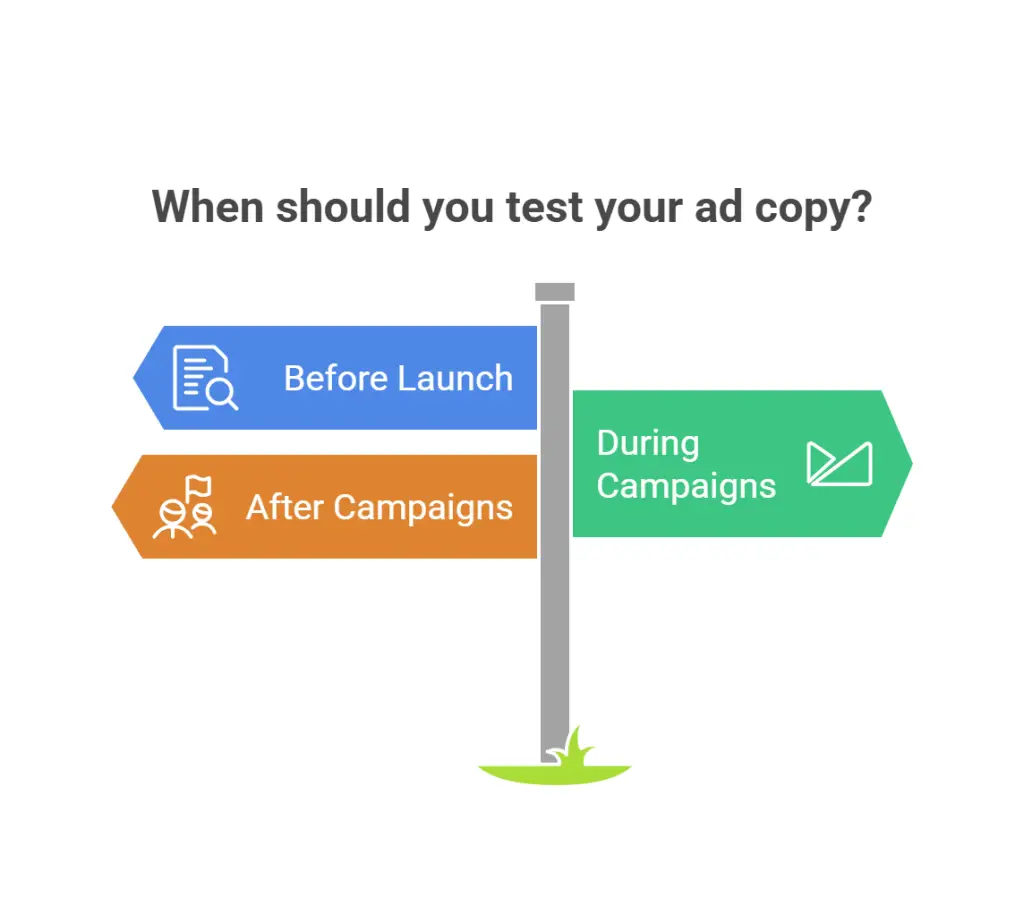
Elements to Test
When running A/B tests on ad copy, focus on:
- Headlines: Try different value propositions, emotional triggers, or word choices.
- Descriptions: Test various benefits, features, or tone of voice.
- CTAs: Experiment with urgency levels, language, and action verbs.
Tips for Writing Compelling and Effective Ad Copy
Now that we’ve covered the importance of ad copy and where to focus your efforts, let’s dive into actionable tips for writing compelling ad copy.
1. Know Your Audience
The first step in writing compelling ad copy is understanding your target audience. This means knowing their pain points, desires, and what motivates them to take action. Tailor your message to speak directly to their needs.
Example:
For a health-conscious audience, an ad for a meal delivery service might focus on the convenience of nutritious, chef-prepared meals: “Eat healthy without the hassle—fresh meals delivered to your door.”
2. Use Emotional Triggers
People often make purchasing decisions based on emotions, not just logic. Tap into emotions like fear, desire, happiness, or urgency to create a more compelling message.
Example:
A security company might use fear to encourage customers to invest in their home security system: “Protect your family and home from intruders. Get peace of mind today.”
3. Be Specific
Vague claims or generic statements won’t resonate with your audience. Be specific about the benefits or features of your product or service. Use numbers, statistics, and tangible results to strengthen your message.
Example:
Instead of saying, “Our product works fast,” try, “Reduce pain in as little as 15 minutes with our clinically tested formula.”
4. Keep It Simple and Direct
Effective ad copy doesn’t need to be long or complicated. In fact, simplicity often wins. Avoid jargon and overly technical language. Focus on delivering your message in the clearest, most concise way possible.
Example:
For a clothing store: “Upgrade your wardrobe with trendy new styles. Shop today and enjoy 20% off your first order.”
5. Create a Sense of Urgency
Scarcity and urgency are powerful motivators. Limited-time offers, exclusive deals, and countdowns can drive immediate action from potential customers.
Example:
“Only 5 spots left for our VIP membership! Sign up before they’re gone!”
6. Use Power Words
Certain words naturally inspire action or evoke emotion. Incorporating power words into your ad copy can give it an extra boost. Examples of power words include:
- Free
- Exclusive
- Instant
- Guaranteed
- Proven
- Limited-time
Example:
“Get instant access to our exclusive guide on small business marketing. Download now for free!”
7. Highlight Benefits, Not Just Features
While features are important, benefits are what truly sell. Your ad copy should emphasize how your product or service will improve your customer’s life.
Example:
A software company might advertise a new feature, but the benefit is what counts: “Automate your bookkeeping and save 10 hours a week with our software.”
8. Include Social Proof
Social proof, such as testimonials, reviews, or endorsements, can be a powerful addition to your ad copy. It adds credibility and builds trust with your audience.
Example:
“Join over 5,000 happy customers who’ve switched to our eco-friendly products. See what they’re saying!”
9. Match the Platform
Tailor your ad copy to the platform you’re advertising on. A Google search ad might require a concise, keyword-driven message, while a Facebook or Instagram ad can allow for more creativity and visual elements.
10. Optimize for Mobile
Since the majority of internet traffic comes from mobile devices, it’s essential to write ad copy that’s optimized for smaller screens. This means keeping it short, scannable, and visually appealing.
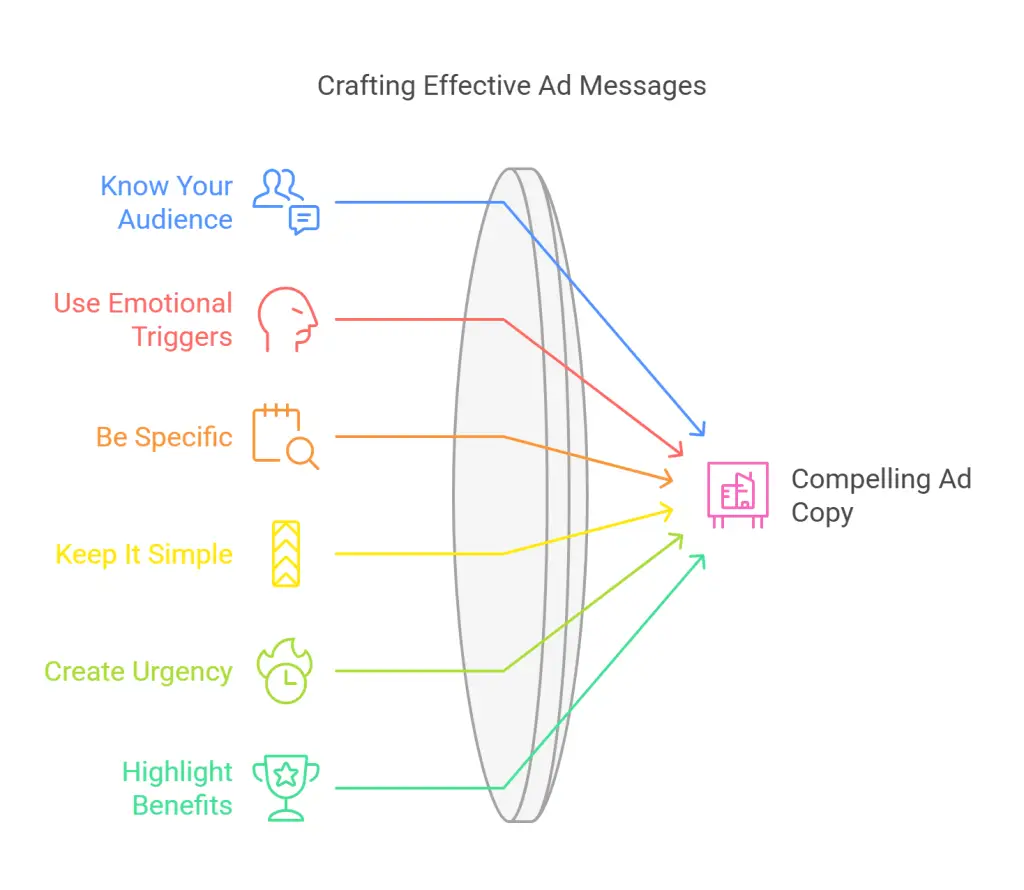
Conclusion
Creating compelling ad copy is one of the most important skills for small business owners and marketers. By focusing on key elements like headlines, descriptions, and CTAs, and by regularly testing and refining your copy, you can drive better results from your advertising campaigns. Keep your audience in mind, use emotional triggers, and always highlight the benefits of your product or service to create copy that not only attracts clicks but also converts.
Next Steps:
- Start by writing different headlines for your next ad campaign and run A/B tests to see which performs best.
- Review your current ad copy and see if it emphasizes benefits rather than just features.
- Consider the platform you’re advertising on and ensure your copy is optimized for that environment.
Frequently Asked Questions
What is ad copy, and why is it important for small businesses?
Ad copy refers to the written content in advertisements designed to persuade readers to take specific actions, such as clicking a link or making a purchase. For small businesses, effective ad copy captures attention, conveys value, and differentiates the brand in a competitive market.
How can small businesses differentiate their brand through ad copy?
Small businesses can stand out by highlighting their unique selling propositions (USPs) in their ad copy. Emphasizing aspects like superior customer service, locally sourced products, or innovative solutions showcases what makes the business special and memorable to potential customers.
What role does ad copy play in improving ad performance?
Well-crafted ad copy leads to higher click-through rates (CTR), which can lower cost-per-click (CPC) on platforms like Google Ads and Facebook. Effective ad copy resonates with users, leading to better ad relevance, improved placement, and overall enhanced ad performance.
Why is understanding the target audience crucial in creating effective ad copy?
Understanding the target audience allows businesses to tailor their messaging to address specific needs, preferences, and pain points. This alignment ensures the ad copy resonates with potential customers, making it more likely to capture attention and drive desired actions.
How can small businesses create urgency in their ad copy?
Small businesses can create urgency by incorporating time-sensitive offers or limited-time promotions in their ad copy. Phrases like “limited-time offer” or “only a few items left” encourage immediate action, prompting potential customers to engage promptly to avoid missing out.
Sources
Further reading
Khalid Saleh, “4 Simple but Powerful Tactics for Writing Compelling Ad Copy,” WordStream, December 1, 2023, https://www.wordstream.com/blog/how-to-write-great-advertising-copy.
Mary Lister, “22 Ways to Write More Compelling Marketing Copy,” WordStream, December 18, 2023, https://www.wordstream.com/blog/ws/2020/01/22/marketing-copy.
Leah Messenger, “How to Write Ad Copy (That Actually Converts): 10 Top Tips,” Similarweb, February 28, 2024, https://www.similarweb.com/blog/marketing/sem-ppc/writing-ad-copy.
“20 Game-Changing Ad Copywriting Tips to Create Ad Copy That Converts,” MagicBrief, October 19, 2024, https://magicbrief.com/post/20-game-changing-ad-copywriting-tips-to-create-ad-copy-that-converts.
“Crafting Compelling Ad Copy: Tips and Examples,” Advictor PPC, October 12, 2023, https://advictorppc.com/blog/compelling-ad-copy-tips-and-examples/.
“How to Write Compelling Copy: 7 Tips for Writing Content That Converts,” HubSpot, June 15, 2022, https://blog.hubspot.com/marketing/write-compelling-copy-tips.
“The Ultimate Guide to Copywriting for Small Businesses,” Create That Copy & Marketing, March 5, 2023, https://createthatcopy.com/the-ultimate-guide-to-copywriting-for-small-businesses/.






